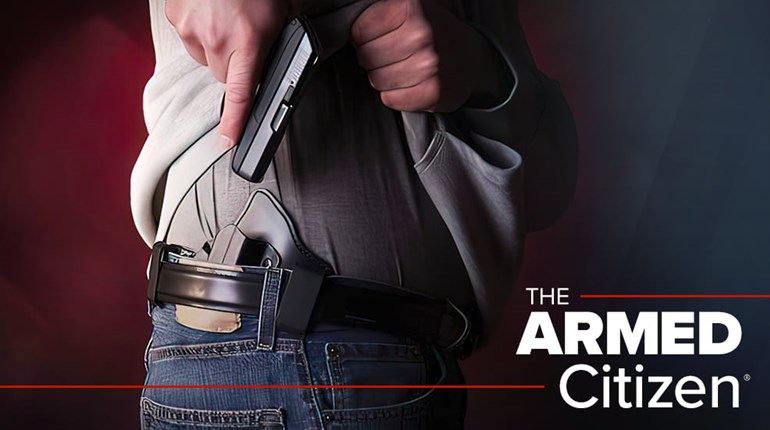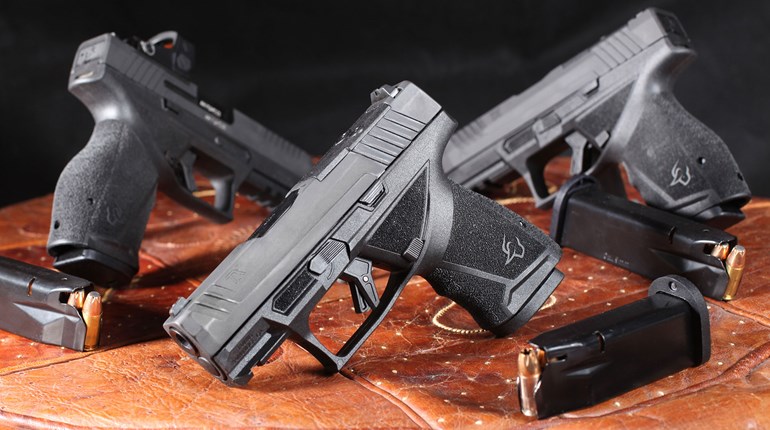
In their pet causes, politics and social media, Hollywood directors and actors often aggressively proclaim that individual Americans can’t be trusted with their Second Amendment freedom. Meanwhile, in their productions, the studios rely on shootouts—what many on the Left like to call “gun violence”—to interest audiences.
This contradiction isn’t something they are even willing to explore. This is a shame, as they could be so much more interesting, even powerful, if they took off the political restraints and let writers, producers and so on explore real stories. Just imagine the heroes they could give us if they really dug into the individual empowerment of this right. They could even give us honest juxtapositions of criminals (the bad guys) with guns confronted by good citizens who know how to wield this right.
Instead, Hollywood is clinging to a weak contradiction by banally opposing something they barely understand but that they rely on for money. This weakens their characters, makes honest analysis of this issue too politically incorrect for them to touch and dumbs down everyone involved.
Still, as they know they must use guns to tell many of their stories, an interesting professional class of prop companies and advisors has been created out of necessity. So how exactly how does Tinseltown execute the bang-bang for big and small screens despite their politics?
“There are still occasions where legitimate firearms are used, firearms that have not been modified in any way,” said Tim Clemente, a retired FBI agent and founder of the specialized production company X-G Productions Inc., whose credits include Criminal Minds (CBS) and NCIS Los Angeles (CBS). “But that is very rare.”
The standard Hollywood go-to is blanks. These have enough gunpowder to constitute a vivid flash at the barrel’s end, giving them Hollywood pizazz. Blanks, however, are still deemed hazardous, given the debris, hot gases and flames they throw off.
“If the guns fire, they are almost always real guns with blanks,” explained Frank DeMartini, producer of “Mad Money” and “Mechanic Resurrection.” “But if they are just seen, they are plastic or rubber.”
Some productions choose to make or hire “prop” guns that are rubber replicas. The production term “suicide guns” is also tossed around sets. These guns function like blank guns with a sealed barrel and are used for sound effects only.
Cutting corners is not a viable option for even low-budget productions. According to DeMartini, an armorer is almost always hired for larger-scale films, while the prop department is in charge of safety on lower-budget productions.
The armorer serves as the ultimate point person responsible for everyone’s safety. They work with all players, from the fire marshal and studio executives, to the stunt coordinator and assistant director—the latter of which is a kind of spokesperson to the producers—to guarantee nobody gets hurt, and to assure that all federal, state and local laws are followed.
“The armorer is responsible for knowing where all the weapons are on set, who has them and that they get them back right away,” said Bobby Chacon, a retired FBI agent and writer/technical advisor for CBS’ “Criminal Minds.” “So when they cut the scene, the armorer is right there to take the weapon and take control.”
This behind-the-scenes role also functions to keep the actors discharging a gun safe.
“Whenever guns come on set, it is announced, and everyone knows it. The armorer or props person will verify that there is no live ammo and will show everyone whether the gun is operable or not operable,” Clemente said. “And if it is going to be firing blanks, they will show the actual loads to ensure there is no projectile.”
The tragedy that changed it all for Hollywood—and induced stringent rules and regulations—occurred during the 1993 filming of “The Crow.” Actor Brandon Lee, son of martial arts legend Bruce Lee, was killed after a crew member fired a blank gun during a break, and a shell, which had been emptied of gun powder, made its way into the barrel. Then, with no one person overseeing the guns, the gun was fired during a subsequent take, and the rogue shell went into Lee’s spine.
Necessary gun-safety protocols should teach producers, actors and more about real American gun culture, which is also predicated upon the NRA’s basic rules of gun safety. After experiencing these protocols on set, they shouldn’t be surprised by the safety measures at any real gun range.
Actors and more should also—given their experiences on set—know something about hearing protection, as the armorer in any production also must make sure the cast and crew wear eye protection and earplugs for any loud discharges.
Now cut to Hollywood’s increasing reliance on suppressors or silencers, which—much to the surprise of entertainment executives—don’t sound like the studios pretend they do. This, again, should influence how these hearing devices are portrayed in film, but the politics of much of Hollywood just looks the other way, even when personal experience shows them that suppressed guns don’t just make some little “pffft” sound.
“There is still a huge misconception about ‘silencers’ in Hollywood. Many watching a silencer/suppressor on-screen might get the impression that it one-hundred percent silences a gun. This could not be further from the truth,” noted Chris Cheng, “Top Shot” star and California-based weapons consultant. “Like a muffler in a car, it just makes it less loud.”
Despite the challenges and their politics, show biz is not ready to reduce its reliance on shootouts. They are, however, more often using technology to add in the gun noise later.
“Productions are now moving more to not even firing a gun,” Clemente said, referring to the electronic “squib” detonator used to trigger more-extensive pyrotechnics. “So it is just an actor pulling a trigger. Later, they will put on the CGI gun flashes and then add the gun-firing sound.”
Many projects are now made without having a need for an armorer on set. This shift away from at least trying to create an authentic scene has some people with real-life firearms expertise concerned, as it could allow Hollywood to go even further down their ideological rabbit hole.

































